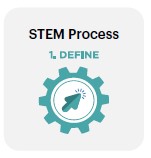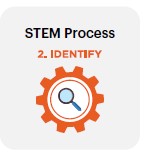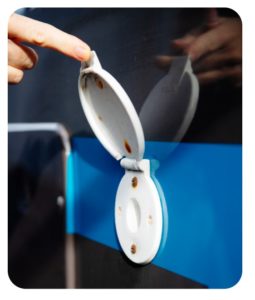Inquiry question 1:
Why are conventional fossil-fuel reliant vehicles a problem for human and environmental health?
6.3 Energy
Students Learn About
- energy sources
Students Learn To
- identify and describe a range of energy sources including renewables and non-renewables
Introduction and background to the unit:
Lesson 1:
 Card sort: Why do we need oil? Ask students what products they use that contain oil. Give student groups a deck of picture cards (print and laminate images so they can be reused) – some of which are products made from oil (e.g. plastics – give examples like basketball, sunglasses, plastic bag, telephone, some candle wax, some lip balms, shampoo and other cosmetics, some fertilisers, some clothing, some pillows etc.) and non-plastics (clothing made from natural fibres, cosmetics made from alternative products, products made from wood, metal etc.
Card sort: Why do we need oil? Ask students what products they use that contain oil. Give student groups a deck of picture cards (print and laminate images so they can be reused) – some of which are products made from oil (e.g. plastics – give examples like basketball, sunglasses, plastic bag, telephone, some candle wax, some lip balms, shampoo and other cosmetics, some fertilisers, some clothing, some pillows etc.) and non-plastics (clothing made from natural fibres, cosmetics made from alternative products, products made from wood, metal etc.
Whole class discussion: where does oil come from? Brainstorm on the whiteboard.
Video 1.1.2: Video bingo – have 3 x sheets of different questions and students have to answer the questions on their sheet (that the answers are given for) and first to complete says bingo. In groups of 3 students go through their responses by swapping sheets and discussing each answer.
Video 1.1.3: Whole class discussion:
- pre-video: How is oil turned into fuel?
- post-video: Do you think the different types of fuels have different functions and impacts on the environment? Do you think this video was made by a crude oil producer? Do you think there are any waste products?
Video 1.1.4: The impact of car emissions on local atmospheric CO2. Students can take notes to address the ‘take-home questions’ (see below).
Article for summary:
Read the whole article aloud, choose a student to or ask students to read some of all of it for homework. Students can take notes to address the ‘take-home questions’ (see below).
Take-home question: What would happen to current CO2 atmospheric levels if there were no car emissions? What are some other impacts of diesel or petrol-powered cars on the environment?
Resources
Video 1.1.1: Electric Kombi Project Introduction
Introduction and background information about the Kombi Conversion Project with Ben Roche
Card sort: Products made from oil
Use this list to get some associated images together and laminate them into cards so they
can be reused.
Video 1.1.2: Oil 101
(2 min 16 sec) by www.studentenergy.org
Video 1.1.2: Oil 101 Video bingo Questions:
- What else is oil known us?
- What is oil composed of? List at least 3.
- What are some properties of oil?
- How was oil formed?
- How long does oil take to produce?
- Where is oil found?
- Who locates oil deposits?
- What technologies are used to find oil?
- Where is oil processed?
- List 3 products that come from oil from this video?
- What are the major uses of plastics by humans?
- What are some of the environmental issues of using and producing oil?
- What are some of the social issues of using and producing oil?
Video 1.1.3: Petroleum refining processes explained simply
(2 min 48 sec)
Video 1.1.4: What did COVID-19 do to the Bay Area’s air quality?
(STOP @ 3 mins)
Lesson 2:
 Teacher demonstration: Students come to the front of the classroom and watch a teacher demo: lighting a tealight candle or with the yellow flame of the Bunsen burner the teacher collects the carbon on a white tile. Questions to students: what is this black substance? Where has it come from? What happens to this substance if not collected on the tile? Discuss carbon dioxide and the common sources in our daily lives. Link to homework – the impact of cars/motor vehicles. The technology of petrol/diesel-powered engines is old but is still utilised in most vehicles.
Teacher demonstration: Students come to the front of the classroom and watch a teacher demo: lighting a tealight candle or with the yellow flame of the Bunsen burner the teacher collects the carbon on a white tile. Questions to students: what is this black substance? Where has it come from? What happens to this substance if not collected on the tile? Discuss carbon dioxide and the common sources in our daily lives. Link to homework – the impact of cars/motor vehicles. The technology of petrol/diesel-powered engines is old but is still utilised in most vehicles.
Video 1.2.1: Students construct a diagram to map the energy transformations that an engine undertakes. Discuss efficiency.
Activity 1.2.1: Students to read the 4-page factsheet on transport emissions from the Climate Council of Australia and make an infographic that states 3 key points from the factsheet. Present using CANVA or alternative web-based application.
Present: Students present their findings – what is the biggest issue with the design of current combustion cars?
Defining and identifying the problem: what can we do to address climate change and reduce CO2 production? Teacher to brainstorm ideas on the whiteboard. Use the example of the conversion of the SCU Kombi – what are some of the benefits and limitations of using an existing vehicle and changing its energy source?
Resources
Video 1.2.1
The technology of a diesel engine that demonstrates the many stages of energy transformations that have to be gone through to make the engine work
Activity 1.2.1
Climate Council of Australia Fact Sheet
Lesson 3:

Activity 1.3.1: Simple machines – see resources for link to lesson plan which includes a PowerPoint, worksheet and scavenger hunt for students to engage with.
Whole class discussion: What are the benefits of simple machines? Ask students to provide some explanations about how simple machines work. Have a discussion about Mechanical Advantage.
Student activity 1.3.2: Work with students to build a simple machine using a product such as Knex (see resources).
Resources
Activity 1.3.1
Engineering: Simple Machines
Whole class discussion
Teacher background information about
Mechanical Advantage
Activity 1.3.2
Knex education Simple Machines Levers and Pulleys set
Knex education Simple Machines Gears set


